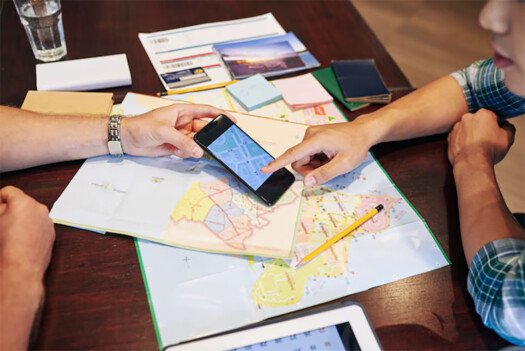Bali is one of Southeast Asia’s most iconic travel destinations. From scenic rice terraces in Ubud to the sun-kissed beaches of Seminyak, Bali offers a rich blend of culture, nature, and vibrant energy. But while its beauty is undeniable, navigating the island safely requires preparation — especially when it comes to transport.
Whether you’re a first-time visitor or a returning traveler, understanding Bali’s unique transportation landscape is crucial for a smooth journey. In this comprehensive guide, we explore 8 essential transport safety tips to help you move around the island without stress, injury, or unnecessary expenses.
🛵 1. Know Your Ride: Scooter Safety is Non-Negotiable
One of the most common ways to get around Bali is by scooter. Affordable, flexible, and fun — yes. But safe? Only if you’re prepared.
Why Scooters Dominate
Scooters are ideal for maneuvering through Bali’s narrow streets and unpredictable traffic. Many locals and tourists rely on them, especially in places where taxis are limited or expensive.
Safety Tips:
- Always wear a helmet, even if locals don’t.
- Rent from reputable providers who offer insurance and properly maintained bikes.
- Do a quick check of brakes, tires, and lights before accepting the scooter.
- Drive defensively. Expect sudden turns, animals crossing, and potholes.
- Avoid driving at night or during rain, when visibility and traction are reduced.
- Have a valid international driving permit with a motorcycle endorsement.
Pro Tip: If you’ve never ridden a scooter before, Bali is not the place to learn. Consider hiring a private driver instead.
🚖 2. Opt for Licensed Taxis or Rideshare Apps
Taxis can be a convenient option — if you pick the right ones.
Blue Bird Taxis are Bali’s most trusted taxi service. Their drivers use meters, are generally polite, and won’t scam tourists.
Beware of Lookalikes
Some other taxis mimic Blue Bird’s branding to fool unsuspecting travelers. Always check the company name, logo, and whether a meter is running.
Alternatively, ridesharing apps like Grab and Gojek are widely used across Bali. You can order cars or motorbike rides, track your journey, and see upfront pricing.
Key Tips:
- Use apps in areas where they’re allowed (some tourist zones ban them).
- Confirm the driver’s identity and plate number before boarding.
- Always lock doors and sit in the back seat.
🚗 3. Consider Hiring a Private Driver for the Day
Hiring a private driver may sound luxurious, but in Bali, it’s a budget-friendly and safe way to explore.
Why It Works:
- Drivers are typically locals with deep knowledge of the area.
- No need to worry about parking, directions, or traffic stress.
- Great for day trips to distant spots like Uluwatu, Mount Batur, or waterfalls in the north.
Ask hotels or travel agencies for licensed drivers with good reviews. Negotiate a fair rate in advance — expect to pay IDR 500,000–800,000 ($30–$50 USD) for a full day including fuel.
Bonus: Many drivers also serve as unofficial guides, sharing stories, taking photos, and even recommending hidden gems.
🏍️ 4. Gojek and Grab Bike: Fast, Cheap, and (Usually) Safe
Motorbike taxis are a thrilling way to skip Bali’s notorious traffic jams — but only if you ride responsibly.
Advantages:
- Extremely affordable (short rides cost as little as IDR 10,000).
- Perfect for solo travelers or quick trips around town.
Safety Guidelines:
- Always wear the helmet provided.
- Don’t ride with heavy backpacks.
- Avoid during peak traffic times or rainy weather.
For longer distances or when carrying luggage, opt for a car instead.
🚧 5. Watch Out for Road Conditions
While Bali’s main roads are paved and maintained, many secondary roads — especially in rural areas — can be unpredictable.
Common Hazards:
- Potholes and uneven surfaces.
- Lack of street lighting, making night driving hazardous.
- Poor signage or no lane markings.
- Flooding during the rainy season (November to March).
If you’re exploring regions like Munduk or Sidemen, make sure your vehicle is in good condition, and plan your route in advance using apps like Google Maps or Waze.
⛽ 6. Know Where to Refuel
If you’re renting a car or scooter, don’t assume gas stations are everywhere.
What You Need to Know:
- Most major towns have Pertamina stations, but they can be sparse in remote areas.
- In villages, you’ll find bottled fuel sold in vodka bottles or jugs at roadside stalls. While convenient, it’s not always high quality.
- Always refuel before long drives or excursions into rural terrain.
Be mindful of your fuel gauge, and don’t push your luck — running out of gas in the hills isn’t a fun travel memory.
🚦 7. Respect Local Traffic Laws (Even If Others Don’t)
Just because others break the rules doesn’t mean you should. Tourists are often stopped by police — sometimes for legitimate reasons, sometimes not.
Tips to Stay Legal:
- Always wear a helmet.
- Carry your passport, rental agreement, and international driving permit.
- Don’t drink and drive. Bali has zero tolerance for DUIs.
- Don’t use your phone while driving — it’s illegal and unsafe.
Police Stops:
Some travelers report being asked for “fines” on the spot. Politely ask for an official receipt or pay at the police station if it feels suspicious.
Note: It’s always safer to comply calmly than escalate. Avoid confrontations.
🌦️ 8. Prepare for the Unexpected: Insurance & Emergency Contacts
Even with all precautions, things can go wrong. A scooter crash, unexpected illness, or even getting lost — these happen more often than you’d think.
What to Do:
- Buy travel insurance that covers medical care, transport-related accidents, and theft.
- Save local emergency numbers:
- Ambulance: 📞 118
- Police: 📞 110
- Tourist Police (Denpasar): 📞 +62 361 754 599
- Use the “share trip” feature on rideshare apps when traveling alone.
- Keep copies of your passport and insurance digitally accessible.
If you do get into an accident or lose your belongings, report it to the tourist police — they’re generally helpful and used to assisting foreigners.
✨ Bonus Tips for a Smooth Ride
- Avoid peak traffic (typically 8–10 AM and 4–7 PM).
- Don’t trust strangers offering rides at airports or bus terminals.
- When using ATMs near transport hubs, be cautious of card skimmers.
- Always carry small change for tolls or local transport.
- Learn a few phrases like:
- “Berapa harganya?” (How much?)
- “Tolong pelan-pelan.” (Please go slowly.)
- “Saya tersesat.” (I am lost.)
🧳 Final Thoughts
Transportation in Bali is more than just getting from A to B. It’s a part of the island’s experience — dodging dogs in backstreets, zipping past rice fields, chatting with local drivers, and discovering hidden temples along the way.
But to fully enjoy it, safety should never be an afterthought.
Whether you’re a solo adventurer, a honeymooner, or a family traveling with kids, following these eight transport safety tips will help you enjoy Bali’s charm — with fewer hassles and greater peace of mind.
Because in Bali, the journey can be just as magical as the destination. 🌴









